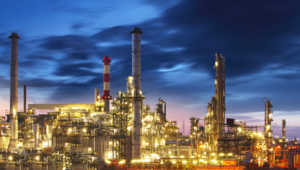› Forums › IoTStack › News (IoTStack) › Hydrocarbon Leak Detection Technologies – What to Consider in Oil & Gas Industry
Tagged: Misc_V11, Sensors_H2
- This topic has 1 voice and 0 replies.
-
AuthorPosts
-
-
March 13, 2019 at 5:28 am #29288
#News(IoTStack) [ via IoTForIndiaGroup ]
To continuously protect well sites, production facilities, pipelines, and storage tanks from catastrophic leak events, an efficient detection scheme should be integrated into the operation’s control system. Today, there are a variety of technologies to consider. Most commercially available solutions fall into one of the following categories:
Physical inspection (direct or remote)
Discrete sensing (vapor, liquid, acoustic)
Computational monitoring
Each of these approaches have their advantages and disadvantages. A comprehensive system will likely use a combination of these technologies. This article focuses on the visual leak detection technologies that are currently available.Historically, continuous visual inspection systems were provided by thermal and/or optical cameras. In the past, disadvantages of using these products included cost, low resolution, deployment complexities, and lack of alarming.
Today, optical and thermal camera technologies continue to become more capable and less expensive, making them more viable for broad use in leak detection systems. Networking and communications technologies are also more advanced and cheaper to implement. Along with sophisticated camera management software that facilitates the integration with process control systems, these can be combined to provide a reliable leak detection system.
What to Consider
As mentioned earlier, a comprehensive hydrocarbon leak detection system will likely be comprised of multiple leak detection technologies. What your solution looks like will depend on the following factors:
Product type – Can the solution detect the hydrocarbon gas or liquid under surveillance?
Leak size - What is the minimum leak size that the system is capable of detecting or needs to detect?
Response time – How long after a leak is detected should the system alarm?
Leak location – How accurately can the system locate the source of the leak?
Release volume estimation – Does the system need to determine the volume of hydrocarbon product released?
False alarm rate – What is the typical false alarm rate for the technologies implemented? Does the equipment in use include false alarm mitigation technology?
Does the system automate necessary actions? - Are actions necessary to verify the leak and mitigate leak consequences automated? Is notification of stakeholders automated? Is the system easily integrated with the facility’s SCADA/DCS system?
Cost – What will be implementation and operating costs of the system?
Reliability – What is the MTBF of the major components of the system?
Availability – Will the system work 24/7? How is affected by changing lighting and weather conditions?
Ease of implementation – How easy is it to install and configure the system?
Ease of use – Does the system present leak alarms to operators and process control system in a timely and clear manner?
Ease of maintenance – How easy is it to repair or calibrate the major components of the system?
-
-
AuthorPosts
- You must be logged in to reply to this topic.
